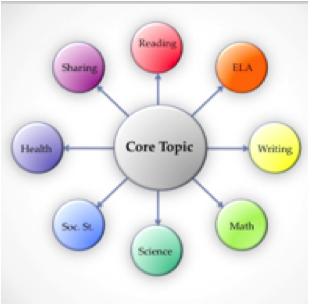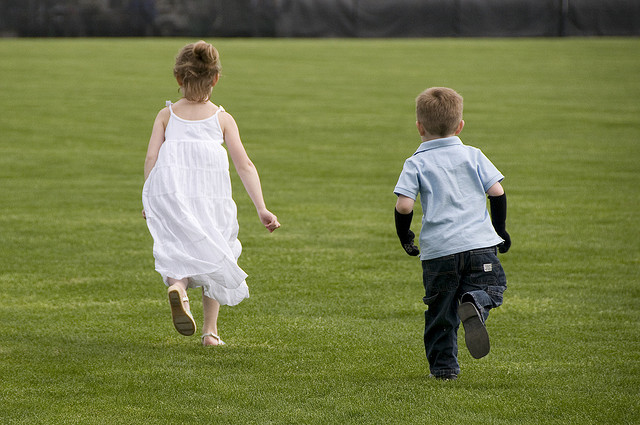Mind Your Mindset: Cultivating a Growth Mindset in our Students
F A I L U R E S E T B A C K S O B S T A C L E S
When we read these words, feelings of sadness, defeat, and pain may rush to the surface as we recall challenging situations. They aren’t always easy to think about, are they? Let’s consider these words in an educational setting with a few tough questions.

- When we face challenges as educators, do we avoid or embrace them?
- As students face setbacks and obstacles, do they give up, blame others, or persist to overcome them?
- When we face criticism, do we ignore it, discount it, or learn from it?
The underlying beliefs that we hold and teach about learning and intelligence have a strong impact on student achievement. We’ve all heard these laments from our students:
- I’m not smart enough!
- I’ve tried, but I can’t.
- Everyone does it better than I can!
- I. Give. Up.
When students believe that they can improve at something, they will understand that effort, time, and persistence help them excel. It is our privilege to help students believe that they can learn and increase their skill in new areas. Carol Dweck, an educational researcher from Stanford, describes how learners who adopt a growth mindset will come to believe that they can achieve more than they ever thought possible. She contrasts this belief to a fixed mindset where learners are fatalistic, believing that they are born with a certain amount of intelligence and living in fear that they are bound by their insecurities and inadequacies. She writes, “No matter what your ability is, effort is what ignites that ability and turns it into accomplishment”[1] Dweck’s research on mindset has influenced curriculum and instruction globally, guiding educators to create skillful learning environments that help children achieve more rigorous learning outcomes.
 Psalm 139:14 assures us that all mankind is fearfully and wonderfully made. The most powerful growth mindset we can cultivate in our students is the belief that each child is made in the image of God and therefore possesses huge potential to do great things. The apostle Paul reminds us to be transformed by the renewing of our minds to experience God’s perfect will. “Putting on” a growth mindset helps us to create a powerful passion for transformative learning. Scripture is full of stories where God brought greatness out of difficulty, challenges, and failure (e.g., consider Joseph, David, and Paul). It is entirely possible to change a fixed mindset to a vibrant growth mindset.
Psalm 139:14 assures us that all mankind is fearfully and wonderfully made. The most powerful growth mindset we can cultivate in our students is the belief that each child is made in the image of God and therefore possesses huge potential to do great things. The apostle Paul reminds us to be transformed by the renewing of our minds to experience God’s perfect will. “Putting on” a growth mindset helps us to create a powerful passion for transformative learning. Scripture is full of stories where God brought greatness out of difficulty, challenges, and failure (e.g., consider Joseph, David, and Paul). It is entirely possible to change a fixed mindset to a vibrant growth mindset.
Teacher practices have a huge impact on students’ mindsets. Let’s build students’ confidence by encouraging a growth mindset in our classrooms. Here are some tips to do so:
- Challenges
Encourage learners to…- Choose more complex challenges in learning task options
- Embrace challenges as learning opportunities
- Realise that their value as students is not at stake
- Failures
Provide safe classrooms for students to fail when learning
Encourage learners to…- View mistakes as necessary, vital steppingstones to learning
- Understand that their identity and value as students is not in their performance
- Obstacles/Setbacks
Encourage learners to…- Persist, to devote more time and effort to overcoming obstacles
- Avoid blaming others or situations
- Effort
Encourage learners to…- Put time and effort into endeavors to achieve mastery
- Avoid thinking that all effort is futile
- Not give up
- Criticism
Encourage learners to…- Learn from criticism and not be offended by it
- Not become defensive about, avoid, or ignore criticism
- Success of others
Encourage learners to…- Be inspired by the success of others, to enjoy rejoicing with those that succeed
(This attitude helps them to see the wonderful image of God in others.) - Not be threatened by the success of others or be excessively self-critical
- Be inspired by the success of others, to enjoy rejoicing with those that succeed
- Feedback
- Praise effort and perseverance, and avoid phrases like, “Great job – you’re so smart!”
Compliments about students’ hard work are more likely to foster a growth mindset where they are encouraged to persist despite failure and setbacks. - Provide personalized feedback as much as possible – help students see areas of improvement and next steps in their progress. Encourage their development.
- Praise effort and perseverance, and avoid phrases like, “Great job – you’re so smart!”
As educators, it is our privilege to create learning environments where students believe that God created them with the ability to do great things. Fostering an encouraging environment and cultivating a growth mindset that welcomes challenges, anticipates struggle and errors, and provides rich and specific feedback for improvement are empowering for students!
Let’s rise to the growth mindset challenge and encourage effort and perseverance which ignites ability and turns it into accomplishment. Let’s mind our students’ mindsets!
Here’s a quick reference table for you to print, edit, or share with your students:
Dorothy Gnanakan
Education Consultant, Teacher Education Services
TeachBeyond Global
[1] Dweck, Carol. S. Mindset: The New Psychology of Success. New York: Random House: 2006, p. 41.
Photo Credits: Problem-Solving via Shutterfly. Dream Big via Shutterfly.


 Even more impactful to learning than a positive teacher/student relationship is teacher credibility. When students believe that they can learn from their teachers, it positively impacts learning almost twice as much as healthy relationships
Even more impactful to learning than a positive teacher/student relationship is teacher credibility. When students believe that they can learn from their teachers, it positively impacts learning almost twice as much as healthy relationships  Provide opportunities for students to fail. This may seem counter-intuitive, but allowing students to fail and then giving them tools to change that failure into a learning opportunity increases student confidence in the learning process. Students need to understand that an incorrect answer or undesirable behaviour is not going to impact their teacher’s care for them. They also need tools that will help them learn from their mistakes. This could take the form of
Provide opportunities for students to fail. This may seem counter-intuitive, but allowing students to fail and then giving them tools to change that failure into a learning opportunity increases student confidence in the learning process. Students need to understand that an incorrect answer or undesirable behaviour is not going to impact their teacher’s care for them. They also need tools that will help them learn from their mistakes. This could take the form of












